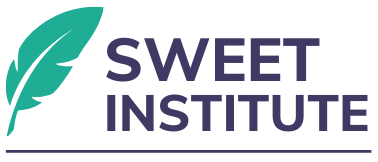The SWEET Model and Burnout Prevention: Reconnecting Clinicians to Meaning, Resilience, and Growth

The SWEET Model and Burnout Prevention: Reconnecting Clinicians to Meaning, Resilience, and Growth
Abstract
Burnout among mental health clinicians poses a critical threat to workforce sustainability, patient care quality, and clinician well-being. Traditional approaches to burnout prevention often focus on symptom management or workplace modifications without addressing underlying existential disconnection. The SWEET Model reframes burnout as a multidimensional experience that reflects misalignment across the conscious, preconscious, unconscious, and existential layers. By fostering self-awareness, purpose reconnection, and reflective practice, the model offers a holistic pathway toward resilience and sustainable growth. This article explores the theoretical foundation of burnout within the SWEET framework and presents applications for clinical practice and organizational leadership.
Keywords
SWEET Model, SWEET Institute, burnout prevention, clinician resilience, mental health, reflective practice, existential psychology, professional growth
Introduction
Burnout in mental health clinicians is characterized by emotional exhaustion, depersonalization, and a diminished sense of personal accomplishment (Maslach & Leiter, 2016). Despite widespread recognition, many interventions fail to address the deeper causes of burnout that reside in the layered complexities of clinician identity, meaning, and relational patterns. The SWEET Model provides a framework for understanding burnout as a signal emerging from disruption across multiple layers of consciousness—inviting clinicians to reconnect with their core purpose and align their work with authentic values.
Theoretical Framework
The SWEET Model’s Four-Layered Transformation framework situates burnout within a biopsychosocial-existential context:
- Conscious: Observable signs of exhaustion, reduced productivity, and cognitive fatigue
- Preconscious: Automatic defense mechanisms, relational strain, and habitual avoidance
- Unconscious: Core conflicts such as fear of inadequacy, internalized stigma, and unresolved trauma
- Existential: Loss of meaning, purpose, and connection to the larger narrative of one’s professional life
Burnout thus emerges not solely from workload or stress but from a complex interplay of psychological and existential factors (Frankl, 1985; Maslach & Leiter, 2016).
Application and Analysis
Using the SWEET Method, clinicians are encouraged to explore burnout through reflective inquiry following the SWEET Formula (Why, What, How, Then What):
- Why: Understanding personal and systemic factors contributing to burnout
- What: Clarifying symptoms, triggers, and behavioral patterns
- How: Implementing strategies such as mindfulness, peer support, boundary-setting, and values clarification
- Then What: Committing to sustainable changes that promote growth and resilience
Supervisors and organizational leaders can apply the SWEET Framework in cultivating supportive environments that address these layers, encouraging open dialogue and psychological safety (Schaufeli et al., 2009).
Implications
The SWEET Model’s holistic approach addresses burnout as a systemic and identity-related phenomenon rather than a simple stress response. This has important implications for:
- Individual clinicians: Empowering self-care as identity work rather than obligation
- Teams and supervisors: Shifting from problem-fixing to culture-building
- Organizations: Designing policies and leadership practices that prioritize meaning and connection alongside efficiency
Such transformation may reduce turnover, improve clinical outcomes, and nurture long-term professional fulfillment.
Conclusion
Burnout prevention requires more than symptom management—it demands a layered approach that reconnects clinicians to their sense of purpose, deepens reflective capacity, and fosters authentic growth. The SWEET Model offers a powerful framework to meet this need, supporting clinicians and organizations in building resilience and sustaining healing work over time.
References
- Frankl, V. E. (1985). Man’s search for meaning. Beacon Press.
- Maslach, C., & Leiter, M. P. (2016). Burnout: A multidimensional perspective. Taylor & Francis.
- Schaufeli, W. B., Leiter, M. P., & Maslach, C. (2009). Burnout: 35 years of research and practice. Career Development International, 14(3), 204–220.
Download the scholarly version of this article by clicking HERE






